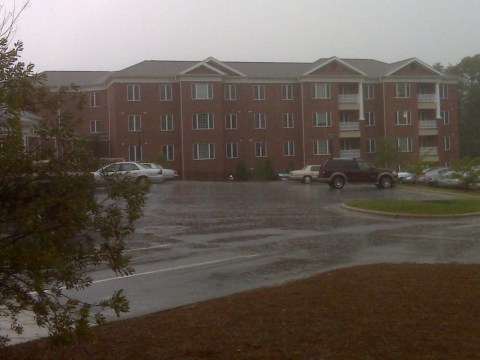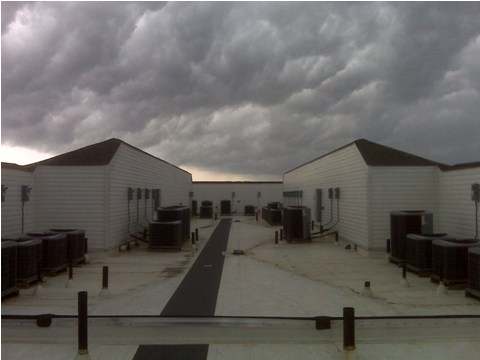
Do you really now that building in your area where you run to all of the time for fire alarms or service calls? Have you ever taken the time to do a thorough walk around to learn all of its intricacies? Do you have a pre-plan, have you ever read it, and is it even up to date? While we know that this probably isn’t in your first due area, it is in Ladder 12’s. FEO West McBride from High Point (NC) Ladder 12 sent in these pictures of a recent find the crews of Ladder 12 and Engine 26 discovered during some area familiarization.

This style of roof construction is more prevalent than you may think, primarily so the AC units can all be placed on the roof out of sight. So think about it… Do you really know your first due?

This building is not in my response area.
Pull every meter, and donkey kick those AC units right off the roof. Problem solved. Next!
What a bunch of FOOLS!!!
I would hate to be the guy sent up there to vent in the middle of the night.
so would you rather have a bunch of small ac units or 1 big unit on the roof? discuss!
Ill take the lg qty of evenly distributed small units over the large central unit under any fire conditions any day….
Denny… I would rather have some ground penetrating radar to check the integrity of the roof.
One LARGE building in our area with the same type of roof layout, but the side walls are BLACK ! The walking surface is also a dark color. Spooky if operating up there at night.
Nothing too special, pretty common in these parts. The biggest worry is decent roof access which in this particular case appears to be a little bit of a pain. I would have to assume that there is a good size scuttle or a man door somehwere up there for maintainace purposes. Looks like one per side about halfway down the parapet wall. The other thing that needs to be thought about right away is, if there is smoke and fire showing from the roof is it in the structure, or is it just an AC unit going.
If the building is going good, controlling the egress from the roof could be a bit sketchy too if you go up there to vertically vent. I think I would try and maintain horizontal ventilation, with a really aggressive attack here.
Good one, LAD288.
I would be hesitant to use the interior stairs (or scuttle hole) to get to the roof. Once the fire floor stairwell door is opened to initiate the attack it is entirely possible that you would be trapped on the roof of this three story frame building with no means of escape. It might be possible to gain access to the roof via the bulkhead stairs ONLY if they are in a remote area separated by fire resistive construction…I doubt that is the case here. A far better alternative would be the aerial ladder. The large parapet walls obviously would make a roof or attic ladder necessary to descend from the aerial to the roof deck. (One could consider jumping down…but then how to get back up…hence the ladder. In an emergency the bulkhead door can be removed to form a sort of ramp that can be used to get back up and over a parapet.) Vertical ventilation of the stairwell is absolutely needed to prevent mushrooming. Other considerations would be the probability of light weight wood truss construction and heavy dead loads on the roof that need to be reported to the IC. If heavy fire has involved the cockloft roof operations are probably too dangerous to continue. The parapet walls make viewing the perimeter of the building to check for fire conditions and jumpers impossible. Also, rope rescue attempts are probably going to be difficult/impossible. Aerial ladder operations are often not possible at these types of multiple dwellings. This can present real problems if the rear of the building is built into a grade making top floor windows beyond the reach of portable ladders. Engine companies must be prepared to make long hand stretches to prevent blocking out aerial ladders. Good discipline is required in apartment complexes to allow later arriving aerials to even get into the complex much less within reach of the building.